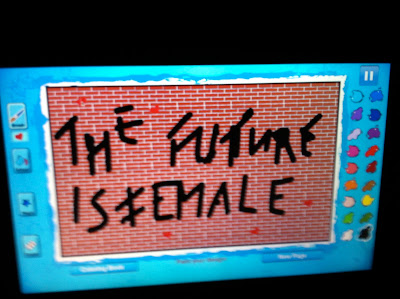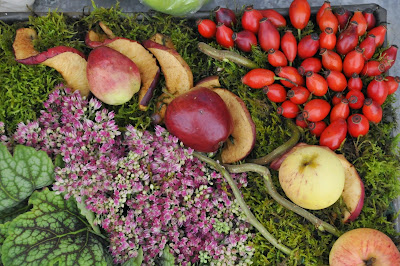Every autumn I make a list of all the fun things I did during summer. It's amazing how long the list always becomes, and the memories keep me warm through the winter.
It's a bit tricky to know when to start counting because many days in May are much warmer than the ones in June and July. For example, I spent some l
ovely days in Kalmar at the end of May going to the HSS conference focusing academia-industry collaboration. Lots of interesting seminars, but best of all was the disco and we danced all night long. This time I managed to visit the beautiful
Krusenstiernska Gården.
In the beginning of June I had the chance to sneak out to one of my favourite places in Stockholm:
Rosendal's Gardens. Next I went to Warsaw for a seminar on innovation, but I managed to
get to know the city a bit too with its great parks and old (rebuilt) town.
The days at home were fun too, picking mushrooms, raspberries and blueberries and just basking in the sun by a lake with a book in hand. We also tried to educate us by
learning more about herbs and other plants at Gunnebo Castle.
At Midsummer, a new tradition has been established and I went to
Kungshamn for a cosy weekend with friends again. This year we walked on the slippery cliffs at Ramsvik. Before the end of June, I managed to go to Berlin for another academia-industry conference and had the opportunity to
explore a bit of the city center. It was quite rainy, why we went to museums and KaDeWe. Summer is not complete without
a visit to Peter Korn's Garden, and this time I could cuddle with one of the tabby cats.
The first weekend in July promised to be very hot, why we headed for the coast since we knew this could be the only really warm days. According to Mum we used to go to
Stråvalla beach when I was a kid, although I don't remember this at all. After that we tried to educate us again through taking part in
a tour in the Rose Garden in Trädgårdsföreningen between the showers. We also took a one-day job at my uncle's current favourite pastime: the Munkedal museum railway.
Another sweet spot is the sculpture park Pilane,
this year followed by a walk around the exhibition of wooden boats in Skärhamn. A new acquaintance was
Vrångå island in the south part of the archipelago. We watched the families walk off the ferry and went in the other direction. Another new experience was
going up Säveån by Paddan, watching new parts of Gothenburg. Going to Hönö for lunch and shopping is becoming a very tasty tradition. I love my new blue trousers! Dinner with friends in Hällsvik was also very inspiring.
Despite the weather, we also managed to go to
Läckö Castle. When we went to the beach at Hindens Rev, the wind was so strong we had our picnic behind the changing rooms. We had better luck when biking on
Ven island, and visiting other beautiful spots in Skåne such as Kullen and Hovs Hallar. The sun was also shining when we went to Särö Västerskog and had a family dinner at Blomstermåla.
I had the good fortune to attend some fun events such as the stand-up comedy show Badjävlar, the Midnight Run competition, the Music on the Water concert with Eric Gadd, a birthday party for my sister and her children, and a village get-together with my parents' former neighbours. We also had some very nice lunches and coffee breaks at
Lärjeåns Gardens,
Råda Säteri and
Gunnebo, with homemade bread and ice-cream. In addition, many hours were spent at the
allotment:
killing slugs, weeding, harvesting and looking at the wonderful sunsets.
According to the meteorology science, summer continues into September at the west coast, at least when it comes to temperature. That's why I also count kayaking at the coast near Fjällbacka as part of my summer activities. A very nice way to spend the end of summer, with lots of sun, wind, good friends and curious seals.

















































